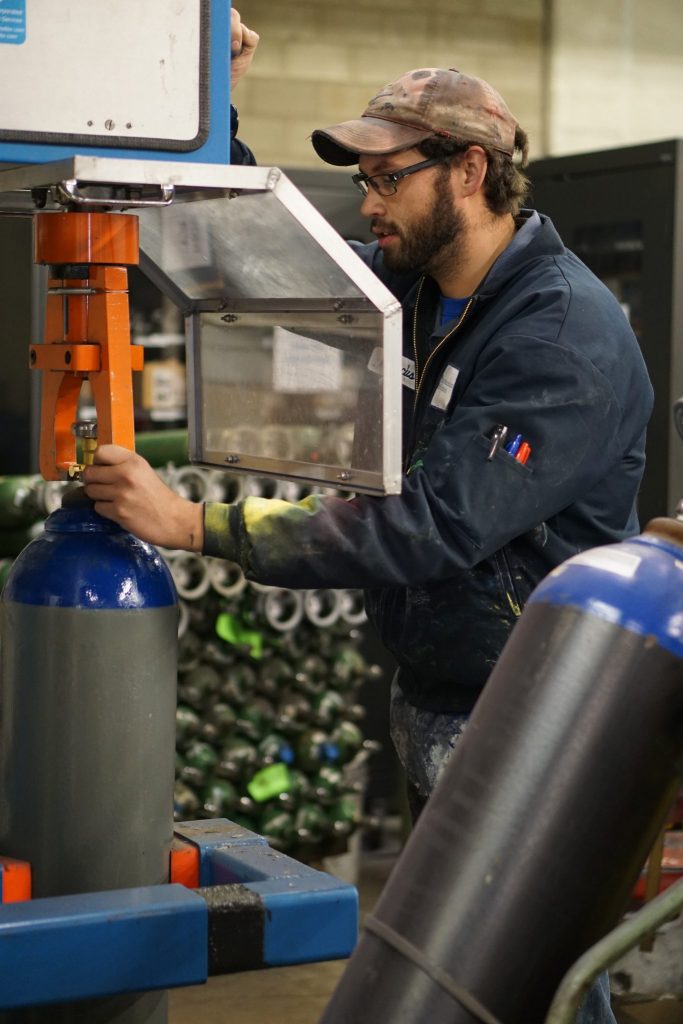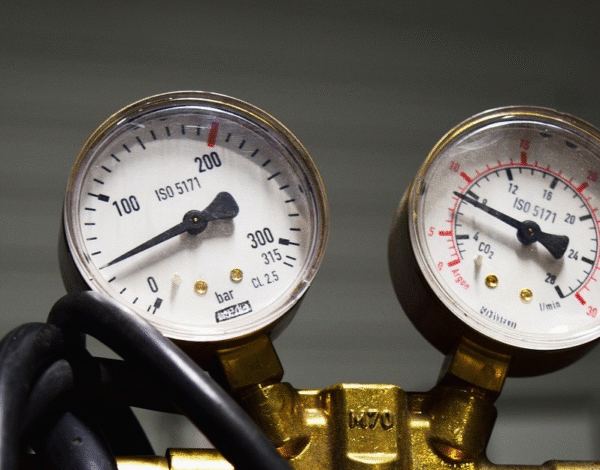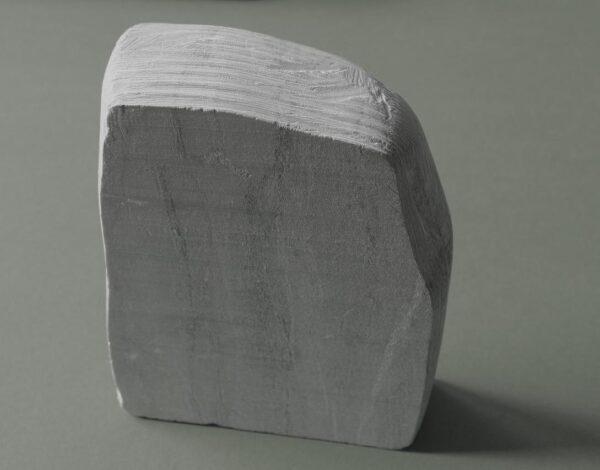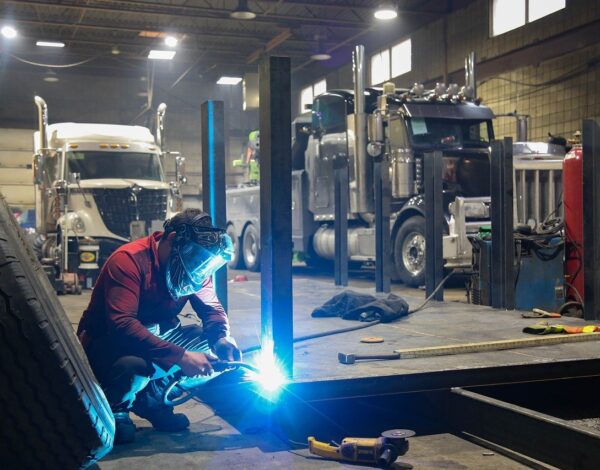

The Ins and Outs of Cylinder and Fire Extinguisher Maintenance
At Rocky Mountain Air Solutions, our goal is to deliver flawless dependability to all of our clients in everything we do. For this blog, we’d like to address one of the aspects of how we provide exceptional customer service through our cylinder maintenance department. We sat down with a couple of our plant managers to get their insights on some of the most pressing questions that customers should know about cylinder maintenance and testing in general and fire extinguishers in particular.
Below we have answered some basic questions about cylinder maintenance. Because you can rely on us for maintaining the integrity of the cylinder products we provide, there is never a need to worry about testing.
What sets RMA apart from your competitors in the Cylinder Maintenance space?
We’re working on a lot of technologies many other companies either cannot or do not provide. RMA is perfectionistic in its testing and maintenance procedures. It is part of our flawless dependability to ensure you receive DOT qualified, tested cylinders for your safety and performance. You don’t necessarily need to know how we test the cylinders, but you do need to know that we follow all rules and regulations.
How does RMA test a particular cylinder?
The cylinder dictates the method. For example, SVBA and fiber wrapped cylinders are much lighter and designed for short term use, therefore they have to be hydrostatically tested.
What does the hydro testing process look like? And what about the ultrasonic process?
For hydro testing, we fill the cylinder up with water, put it in a sealed jacket, then pressure test the cylinder to gauge its expansion. If it passes, we dry it off and put it back in service.
For ultrasonic testing, we scan the walls of the cylinder to see if there are any cracks, chips or dings in the inner cylinder wall. It is in the testing of the cylinder wall integrity that ensures the cylinder is safe for high pressure gas filling and therefore safe for your use.
How often do cylinders need to be tested for compliance?
Typically at 5 or 10 years. Aluminum and CO2 are 5-year cylinders, but most other gas cylinders are good for 10.
Are there things companies can do to make their cylinders last longer?
Absolutely. You always want to limit damage to the valve. As for the cylinder itself, don’t strike it or drop it. Since corrosion is the primary cause of lost value, RMA takes the time to regularly paint cylinders when they are returned. This paint, in combination to your company keeping them in a dry environment, will reduce corrosion. If you are using your cylinder for a welding process, be careful to avoid arc burning the cylinder by accident. It’ll ruin it and cause it to fail, possibly catastrophically. Thankfully, arc burns are easy to spot, especially after freshly blasting the cylinder.
We also perform a process called sandblasting. Before we re-valve or paint a cylinder, we inspect it after sandblasting off the last remnants of any paint. This gives us a clear look at the cylinder. It is this first visual that begins the safety inspection process.
Are there early warning signs for cylinder leaks or breakdowns companies should be aware of? And are there tips for performing valve maintenance?
If you think your cylinder is leaking, you can perform a leak check by pouring a soapy detergent over the cylinder around the valve or regulator. If the cylinder is leaking, the soapy material will bubble. Usually leaks aren’t found in the cylinder, but rather in the system it’s attached to. With this in mind, always check the joints. Make sure the cylinder isn’t sitting in water, and isn’t covered in rust, soda or syrup that would cause corrosion. We visually inspect for dings, dents, or gouges. When it comes to valve maintenance, NEVER attempt to do it yourself. If you are leasing or renting from RMA, we have the professionals you need for valve replacement. Our technicians are specifically trained for valve replacement and perform this function on a daily basis.
What does it mean when a cylinder expires?
Gases don’t expire—they’ll stay mixed or stay in their states for many years. If the cylinder expires, and you are still using the gas, there’s no need to worry. As soon as you return the empty cylinder, it will be put in our “Due For Test” population and fully requalified for future use. This testing discipline is an excellent reason to rent or lease cylinders rather than buy your own. RMA carefully trains its employees in maintaining all cylinders per DOT requirements, ensuring your cylinder is safe to use.
How durable are gas cylinders?
Cylinders are incredibly durable. We have a prime example of good maintenance sitting in one of our showrooms: made in 1910, the cylinder is still as viable today as it was back then. Just as with all things, without proper servicing, cylinders could suffer from a defect that could cause them to fail under use. Testing cylinders ensures the integrity of the cylinder is up to DOT and industry standard.
Some people try to refill CO2 tanks (such as for paintball). Is this something you would advise for or against?
NEVER refill cylinders yourself. As with valve maintenance, always take it in to a professional. If you try to fill a cylinder with a defect, it could fail, causing severe injury or worse.
Do you refill cylinders or fire extinguishers last minute or in emergency situations?
Since most of our customers have rented or leased cylinders from RMA, they simply return the cylinder for another cylinder when needed. For those customers that choose to own their own cylinders, we have a population of customer-owned cylinders to exchange with the empty. But to be insured there is always product available, it is most practical to rent or lease cylinders and leave the testing to us.

These last four questions and answers relate strictly to our Salt Lake City branch.
Does your company tag or service fire extinguishers?
Rocky Mountain Air Solutions, formerly Universal Cylinder Service, performs all of the required services that meet federal, state and local fire code requirements. In addition to selling all types of new fire extinguishers, we can also update the tags and recharge them if necessary. We can quickly identify what is required and will always let you know the cost before we perform the service.
How often do we have to get our fire extinguishers tagged or serviced?
Every year it is a requirement for a commercial or industrial business to have their fire extinguishers serviced. The services performed are notated in the form of an annual inspection tag that is placed by a licensed service technician on the front of the fire extinguisher or fire protection equipment so it can be identified by the local Authority Having Jurisdiction (AHJ). There are specific services that are required at certain intervals per federal, state and local fire code requirements.
How many and what types of fire extinguishers does our business have to have to be compliant?
The first basic requirement is that a fire extinguisher is placed every 75 feet of travel. They shall be placed in the path of egress and shall be visible. Another requirement a 2A:10BC, otherwise known as a 5lb ABC fire extinguisher for commercial environments with a low hazard rating. This is easily described as an office type of environment where there are no significant hazards. Small computers, printers, or other small types of equipment that typically do not catch fire only require a 5lb ABC fire extinguisher for fire protection. As hazard levels go up, so do the required sizes of fire extinguishers. For industrial types of environments, a minimum of a 10lb ABC may be required or larger depending on what types of hazards are present. Our certified technicians are trained to identify these hazards and make recommendations based upon the required codes.
Does your company offer any type of on-site fire extinguisher service or do we bring our fire extinguishers to your facility?
We offer both on-site fire extinguisher service as well as service in house. In many cases it is a “service while you wait,” where we can have your extinguishers inspected with an updated tag in less than 15 minutes, depending on what services may be required.



